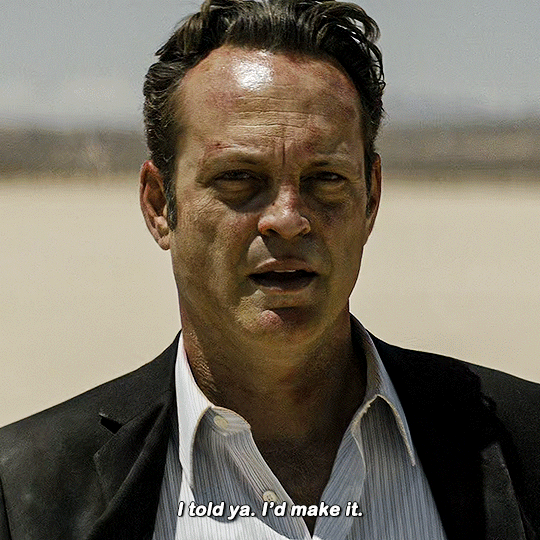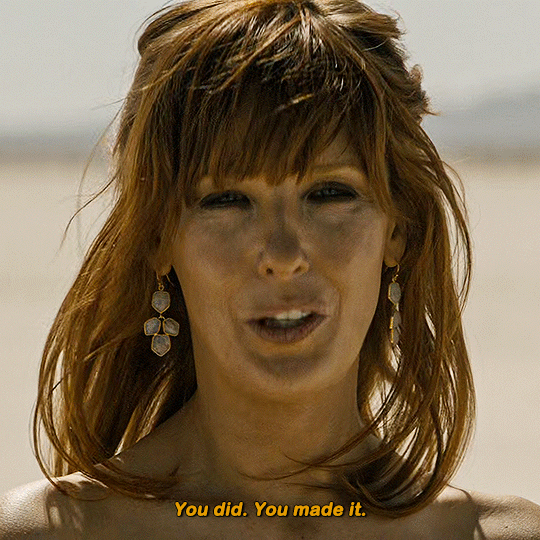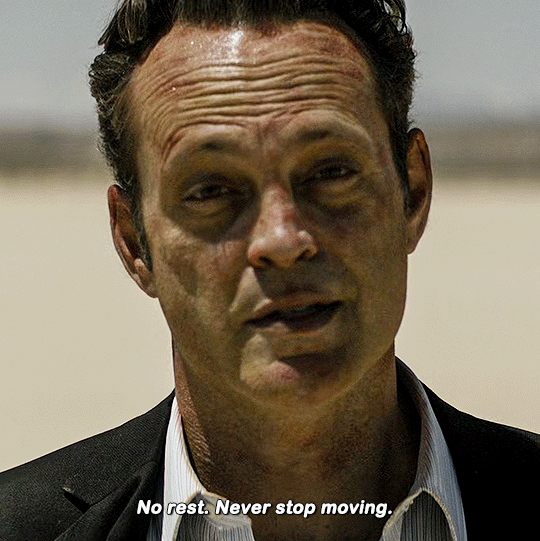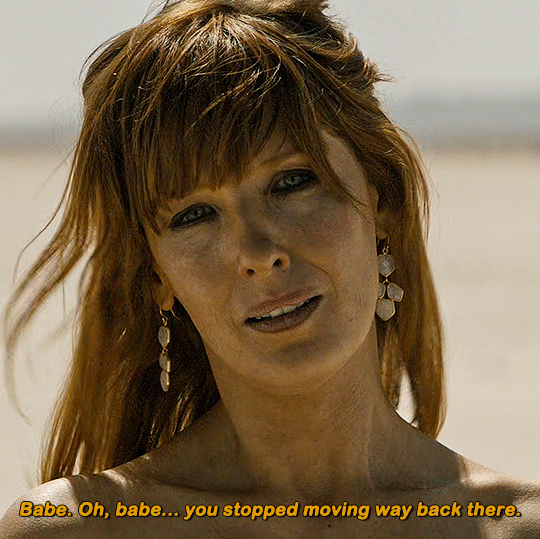#frank semyon
Explore tagged Tumblr posts
Text


FRANK AND JORDAN SEMYON True Detective, 2.08 "Omega Station"
#true detective#truedetectiveedit#jordan semyon#frank semyon#kelly reilly#vince vaughn#ours#by bri#otpsource#dailyflicks#usereerie
38 notes
·
View notes
Text











TRUE DETECTIVE, 2.07 "Black Maps and Motel Rooms"
Jordan just walked in. I'll catch her? No. Bring her inside.
#true detective#truedetectiveedit#vince vaughn#kelly reilly#vincevaughnedit#kellyreillyedit#jordan semyon#frank semyon#jordansemyonedit#franksemyonedit#tvfilmcentral#tvfilmdaily#tvarchive#filmtvtoday#tureign#userairi#*mygifs#yeah i'm back on my true detective bullshit what about it
44 notes
·
View notes
Text











True Detective // Dorothea Lasky
#swallow your trauma whole#true detective#frank semyon#rust cohle#dorothea lasky#z#w#mine#trauma#web weaving#flat circle
41 notes
·
View notes
Text
📣📣📣 Do you think Ray Velcoro and Frank Semyon ever explored each other's bodies
#tani's personal shit#true detective#true detective season 2#Ray Velcoro#Frank Semyon#scrolled down my td tag and man. the odd friendship between those two is so compelling
0 notes
Text

Portrait of Vladimir Solovyov
Artist: Ivan Kramskoi (Russian, 1837-1887)
Date: 1885
Medium: Oil on canvas
Collection: The State Russian Museum, Mikhailovsky Palace, Saint Petersburg, Russia
Description
Vladimir Sergeyevich Solovyov (1853–1900), the son of the leading historian Sergei Mikhailovich Solovyov, was a philosopher, poet, publicist and literary critic. His teaching on the universe as an “all-encompassing unity” that united the Christian tradition with the West European idealism of the 19th century gave an impulse to the appearance and development of a whole school of philosophy (Lev Karsavin, Evgeny Trubetskoy, Semyon Frank and others), and his poetry and critical essays helped the development of literary Symbolism. He taught in the St Petersburg University as well as in other educational institutes in the capital.
#portrait#vladimir solovyov#seated#three quarter length#russian philosopher and poet#russian literary critic#open book#black slacks#black coat#painting#oil on canvas#fine art#oil painting#artwork#russian culture#russian art#russian realist painter#ivan kramskoi#russian painter#european art#19th century painting#the state russian museum
22 notes
·
View notes
Text
Floor Eimers and Semyon Velichko

Floor Eimers and Semyon Velichko Семен Величко, “Concertante”, choreo by Hans van Manen, music by Frank Martin (“Petite Symphonie Concertante”), costume by Keso Dekker. As part of the program “Dancing Dutch” (“Tenzij” by Milena Sidorova and Caroline Shaw; “Wings of Wax” by Jiří Kylián; “Anima Animus” by David Dawson and Ezio Bosso and “Concertante”), Het Nationale Ballet Dutch National Ballet, Het Muziektheater, Amsterdam, Netherlands (March 30 to April 14, 2024).
Note: Original quality of photographs might be affected by compression algorithm of the website where they are hosted.
Source and more info at: Floor Eimers on Instagram
Photographer Altin Kaftira on Vimeo Photographer Altin Kaftira on Twitter Photographer Altin Kaftira on You Tube Photographer Altin Kaftira on Facebook Photographer Altin Kaftira on Instagram
Altinfilms Website Altinfilms on Twitter Altinfilms on Facebook Altinfilms on Instagram
#Altin Kaftira#Concertante#Edo Wijnen#Floor Eimers#Frank Martin#Hans van Manen#Hans van Manen Festival#Het Muziektheater#Het Nationale Ballet Dutch National Ballet#Keso Dekker#Petite Symphonie Concertante#Dans#Danse#Dance#Danza#Dancer#Dansen#Balet#Ballet#Балет#Ballett#Balletto#Balerino#Balerina#Ballerina#Ballerino#Bailarina#Балерина#Танец#Tänzer
2 notes
·
View notes
Text
Elements of Gnosticism in Dialectical Materialism (Soviet Marxism) part 3
3. The Relationship between Gnosticism and Dialectical Materialism in the Self-Understanding of Soviet Culture

The close relationship between Gnosticism and the Soviet version of dialectical materialism begins to become clear if one traces closely the latter’s historical emergence. In the late nineteenth and early twentieth centuries, when Russian Marxism was taking shape, Russia’s intellectual life was strongly influenced by the neognostic philosophy of Vladimir Soloviev, from which the philosopher largely distanced himself at the end of his life. (Soloviev’s disavowal of his earlier neognostic positions is primarily expressed in his Three Conversations about the Antichrist [1899–1900], in which he creates the self-parodying figure of an emperor-Antichrist who wishes to redeem and reorganize the world without transcending the human nature.) However, Soloviev’s neognostic philosophy exerted a profound influence on all spheres of Russia’s cultural life at the beginning of this century under the name of “Sophiology.” This philosophy, which combined the basic Gnostic doctrines with the most modern and radical demands of the Russian avant-garde, as well as with the philosophies of the later Schelling, Schopenhauer, Nietzsche, and Marx, attracted many of the leading figures from the ranks of Russian Marxism. Thus, Semyon Frank, one of their principal representatives, who also traveled the path from Marxism to Soloviev, writes that his own Marxism was characterized from the beginning “by a positive assessment of precisely this moment of a ‘Goethean’ objectivism in Marx, of Marx’s subordination of the moral-political ideal to the immanent-objective, as it were, cosmic principles of social Being.”

Soloviev’s philosophy was directed toward a mystical, artistic form of action that would transform the world order and lead to the Gnostic apokatastasis. The most interesting example of this kind of project was The Philosophy of the Common Task by Nikolai Fedorov, who was Soloviev’s contemporary and proposed the artificial resurrection of the dead as the supreme goal of science, morality, art, the state, etc., through which humanity would close the circle of time in a truly radical manner and become its own creator. Soloviev and Fedorov’s ideas exerted a powerful influence on broad circles of the left-wing Marxist intelligentsia in Russia, particularly the circles around Bogdanov, Lunacharsky, and others with which Lenin was closely associated for many years. The possibility cannot be ruled out that, despite his verbal professions of orthodox Marxism, Lenin was much more strongly influenced by these ideas as well as by Russian Nietzscheanism of the time than is generally assumed. At least there is no other way to explain why he so drastically shifted his attitude towards the concept of ideology. In contrast to classical Marxism, in which the word “ideology” had a negative charge (one it has retained up through contemporary Western Marxism), Lenin always uses it positively and speaks of the “proletarian ideology” that will mobilize the masses. Lenin’s defense of ideology is always combined with the affirmation of its “vitality,” its indispensability for “lived life”—expressions that inevitably recall Nietzsche’s “life-sustaining illusion.” For Lenin, the opposite of “false ideology” is not science, but a “correct, progressive ideology” that corresponds to its time, but that may later become a “brake on social development” in its turn. In their radicalism, which is not always adequately recognized, these assessments of ideology’s role, which are present throughout his writings, demonstrate that Lenin’s ideological dogmatism had purely tactical grounds; if it remained unshakeable throughout all the ideological polemics in which he engaged, this may be precisely because it was not actually meant “that seriously” but operated at the level of reflection and action, which was inaccessible to his opponents.

Later Soviet philosophy could be characterized by its interest in the work of Cusanus. It is not just Cusanus’s “dialectics” that is emphasized but above all his rejection of any formulated theory and his striving “for the pure possibility that lies outside this world.” (It is also worth noting that Cusanus was a seminal figure for many Russian neognostic thinkers, in particular Semyon Frank.) Cusanus is also appreciated for his polemic against Aristotelianism, regarded as the “official ideology” of the European Middle Ages. In keeping with Lenin’s famous formula regarding “two cultures within a single culture,” whose contest at the intellectual level mirrors the class struggle, Soviet historiography views Thomism as “the official culture of the feudal class,” and various forms of pantheism, mysticism, magic, and alchemy—all of which more or less have their origins in Gnosticism—as the culture of the oppressed classes, which contain “early materialist” and “early socialist” tendencies.

Especially interesting in this regard is Vadim Rabinovich’s book Alchemy as a Phenomenon of Medieval Culture (1979), which attracted quite a bit of attention in its day. In it, the author draws a parallel between alchemy, which he views as having its origins in gnosis and regards as a kind of alternative religion to Christianity, and dialectical materialism. In fact, the dialectical development of matter into spirit in dialectical materialism can quite plausibly be compared to the alchemical opus. For as Rabinovich shows, the “alchemical formula” represents a program for achieving the practical and dialectical union of opposites, which is meant to take place beyond both language and contemplation, the alchemist’s “gold” being understood as a metaphor for the spirit or the perfect life. The alchemist transforms the world through pure action encompassing all cosmic planes and forces, and in this way rises above the creator of this world. Rabinovich also reinforces the parallel with dialectical materialism by recalling the words of Engels, who refuted Dühring’s sneering dismissal of “the utopian socialists” as “social alchemists” by pointing to the valuable contributions of both the utopians and the alchemists.

In keeping with the above, the relationship between dialectical materialism and gnosis may be characterized as follows. Neither gnosis nor dialectical materialism believes in humanity’s capacity to arrive at true insight into the nature of the world through tradition, contemplation, science, art, morality, or by any other means, since people’s positions in this world determine and thus relativize all their insights. The critique of this world is therefore only possible as its transformation, as an action in which all partial forms of wisdom and partial insights can and must play only an instrumental role. Their own claim to truth is understood as “metaphysical” or “idealistic” and rejected. The supreme wisdom of gnosis is precisely this insight into the impossibility of all insight, which legitimates the claim of Gnostic doctrines to absolute power.

The difficulty with this turn to “apophatic materialism” is clearly that, while the belief in the determination of human thought by its positioning in the world (by its “individuality”) is retained, the possibility of describing the corresponding world structure scientifically (or in any other way) is denied. That means the recognition of human freedom—however, the nature of this freedom remains unspecified, as does the corresponding dialectical-materialist-alchemical formula for changing the world. If “discovering their individuality” for human beings means determining their position in the world, in “apophatic materialism” this ceases to be possible. However, radical skepticism in the spirit of the cogito ergo sum also ceases to be possible, because if the cogito is determined by the sum, but the sum remains indeterminate, then the cogito as well as its radicalization in critical action remain indeterminate as well.

When skepticism loses its radicality, it no longer represents a total distancing from the world, tradition, everyday life, etc., but only a partial distancing in certain respects, and as a result the world-changing action becomes merely partial as well. Even more importantly, however, this action can no longer be “individual” or “original” (either in the sense of being “new” or “unusual” or in that of “proceeding from the origin”), that is, “productive,” but only reproductive. This means, however—and the consequence is observable—that the “negative,” “mystical” radicalization of dialectical materialism which opens a specific path to postmodernity is accompanied by a cynical realism in the sense of a total simulation of the “ideological superstructure.” This is a self-reflection, however, that lies far beyond the reach of Soviet dialectical materialism.


#akane kurokawa#aquamarine hoshino#marxism#marxist- leninist#marxism-leninism#ussr#lenin#communism#personal#marxist leninist#plutarch#genshin impact#gnostic
0 notes
Text

Rachel McAdams in True Detective (2014) Church in Ruins
S2E6
Desperate to locate a missing woman with intel about Caspere, Frank meets with Mexican drug dealers; Ani infiltrates an exclusive inner circle, with Ray and Paul keeping close tabs.
*Frank Semyon: You may be one of the last friends I got.
Detective Ray Velcoro: Wouldn't that be fucked up.
#True Detective#2014#tv series#Church in Ruins#S2E6#Rachel McAdams#drug dealers#party#private party#undercover#police investigation#corruption#relationships#full moon#negotiation#drama#cop drama#police procedural#psychological drama#suspense mystery#crime#mystery#thriller#just watched#2015 episode
1 note
·
View note
Quote
-[Mi vida] hubiera podido ser diferente. -De todas las mentiras que se dice la gente, esa es la más común.
Ray Velcoro y Frank Semyon (True Detective).

6 notes
·
View notes
Text






Vince Vaughn & Kelly Reilly as Frank & Jordan Semyon True Detective 2.08
#true detective#truedetectiveedit#tvedit#vince vaughn#kelly reilly#userleah#tvfilmcentral#televisiongifs#usercreate#tvarchive#cinematv#cinemapix#tvgifs#tvandfilm#ours#by eri
108 notes
·
View notes
Photo








65 notes
·
View notes
Photo


True Detective
#true detective#season 2#frank semyon#ray velcoro#vince vaughn#colin farrell#true detective quotes#tv show quotes#drama#crime
57 notes
·
View notes
Photo

Frank Semyon: You might be one of the last friends I got. Ray Velcoro: Wouldn't that be fucked up?
12 notes
·
View notes
Photo

Down Will Come - True Detective (2015)
#2015#film#series#TV show#television#True Detective#Down Will Come#Rachel McAdams#Detective Ani Bezzerides#Ani Bezzerides#Colin Farrell#Detective Ray Velcoro#Ray Velcoro#Taylor Kitsch#Officer Paul Woodrugh#Paul Woodrugh#Vince Vaughn#Frank Semyon#Vinci#California#SIG-Sauer#P226 E2
26 notes
·
View notes
Photo



24 notes
·
View notes
Text
Floor Eimers and Semyon Velichko

Floor Eimers and Semyon Velichko Семен Величко, “Concertante”, choreo by Hans van Manen, music by Frank Martin (“Petite Symphonie Concertante”), costume by Keso Dekker. As part of “Dancing Dutch” (“Tenzij” by Milena Sidorova and Caroline Shaw; “Wings of Wax” by Jiří Kylián; “Anima Animus” by David Dawson and Ezio Bosso and “Concertante”), Het Nationale Ballet Dutch National Ballet, Het Muziektheater, Amsterdam, Netherlands (March 30 to April 14, 2024).
Note: Original quality of photographs might be affected by compression algorithm of the website where they are hosted.
Source and more info at: Floor Eimers on Instagram
Photographer Altin Kaftira on Vimeo Photographer Altin Kaftira on Twitter Photographer Altin Kaftira on You Tube Photographer Altin Kaftira on Facebook Photographer Altin Kaftira on Instagram
Altinfilms Website Altinfilms on Twitter Altinfilms on Facebook Altinfilms on Instagram
#Altin Kaftira#Concertante#Edo Wijnen#Floor Eimers#Frank Martin#Hans van Manen#Hans van Manen Festival#Het Muziektheater#Het Nationale Ballet Dutch National Ballet#Keso Dekker#Petite Symphonie Concertante#Dans#Danse#Dance#Danza#Dancer#Dansen#Balet#Ballet#Балет#Ballett#Balletto#Balerino#Balerina#Ballerina#Ballerino#Bailarina#Балерина#Танец#Tänzer
2 notes
·
View notes